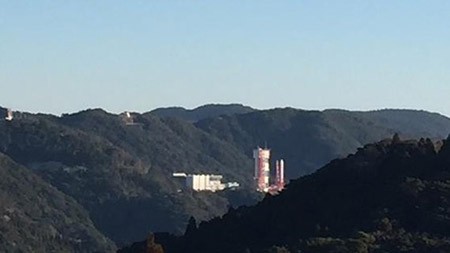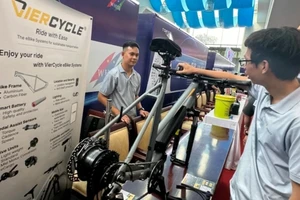
Accordingly, at 9:50am (local time or 7:50am GMT+7 in Vietnam) on January 18, JAXA launched Micro Dragon satellite, along with 6 Japanese ones, in an Epsilon rocket from the Uchinoura Space Centre in Kagoshima Prefecture, more than 1,000km away from Tokyo.
The launch was supposed to be carried out the previous day; yet due to adverse weather, it was postponed one day.
After one hour from the launch, Micro Dragon was expected to detach from the rocket, and it would send the first pictures back 1 to 2 days later, followed by a 1-to-3-month piloting time.
Satellite Micro Dragon is a Vietnamese product in the framework of the project by the Vietnam National Space Center (VNSC) under the Vietnam Academy of Science and Technology.
The 50-kilo satellite was developed by 36 M.A. engineers in space technology, sent for a 5-year training period from 2013 in 5 leading Japanese universities, including Tokyo University, Keio University, Hokkaido University, Tohoku University, and Kyushu Institute of Technology.
The satellite uses two multi-spectrum cameras having Liquid Crystal Tunable Filters (LCTF), which are able to capture images in 12 wavelengths of 412nm to 1020nm. These pictures capture an area of around 36 x 48km when in the height of 500km.
The images by Micro Dragon will be used in the data exchange with the international Micro community to increase the quick adaptation ability of people to climate change and disaster prevention.
They can also be used along with current remote sensing data to confirm the develop new applications or improve the quality of existing ones.
Satellite Micro Dragon is designed to monitor the water quality in coastal regions, locate aquaculture sources, observe changes in these areas in order to aid the Vietnamese aquaculture.
Before this, engineers of VNSC successfully created the super-small-size satellite Pico Dragon with the weight of just 1kg. It was launched into the orbit in November 2013.
At the moment, Vietnam is developing the 10-kilo Nano Dragon satellite.
As scheduled, after Micro Dragon, Vietnam will manufacture satellites Lotusat-1 and Lotusat-2 possessing modern radar technology, each of which will be 600kg and can work in the orbit for 5 years.
























